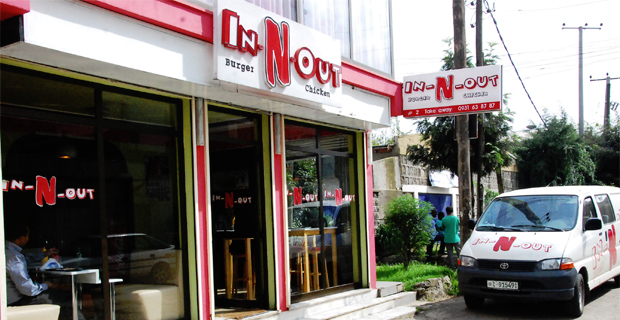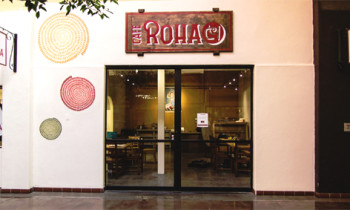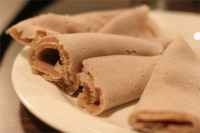An In-N-Out Dispute Over Foreign Trademarks

By Bewket Abebe
Addis Ababa, Ethiopia – IN-N-OUT will stay in or out of business, depending on whether or not the American IN-N-OUT will have its way over the Ethiopian, or on whether or not business will be dictated by what the Ethiopian Intellectual Property Office (EIPO) or the Ministry of Trade (MoT) will say.
For the customers who were enjoying their food at the IN-N-OUT Burger and Chicken joint near the Millennium Hall on Tuesday, September 10, 2013, the issue probably did not percolate into their food. But, the American company was alerted about its name being used when American tourists called to complain about the experience they had there.
At 9:00pm on Tuesday, Saleamlak Andargie, the owner of the Ethiopian IN-N-OUT, was working with his wife preparing customers’ orders.
“I work until midnight. But, I am really happy because it is profitable,†he said.
He had been aware of the trademark conflict since 2012, when the EIPO, in response to an application by the American IN-N-OUT, called out for any counterclaims to the trademark before registering it with the foreign company. Saleamlak says that he had contacted the EIPO then, but was informed that the brand was already well known under the American company long before the Ethiopian joint opened its doors, in 2011. In December 2012 IN-N-OUT was officially recognised as an American brand by the EIPO.
In June and July 2013, IN-N-OUT also applied for the registration of two trade mark extensions for indoor and outdoor services inEthiopia. The American franchise, established in 1948, has now hired a lawyer,
Rahiel Alemayehu has been pushing the Ethiopian company to stop using the trademark. She says if the Ethiopian company fails to comply, her client could be forced to take further measures, but does not say what those measures could be.
Saleamlak is continuing to go ahead with his business, however. He has opened a second branch, around Peacock onAfrica Avenue, plus a further four, at Megenagna, Sarbet, Piazza and another site he is yet to identify. At the three locations, he is already in talks with building owners, although he is increasingly uncertain about the name he currently holds.
“Given my low understanding of the international law on trademarks, I have no idea about what will happen, but I will continue to do my job as far as I have the business licenses from the Ethiopian government,†he said.
IN-N-OUT, he said, was the last of the six names he presented to the authorities when he registered his company, and the only one that was accepted. That Saleamlak may not be aware of international law may be no guarantee.
“It is up to the business person to be vigilant about the consequence,†says Brehanu Adelo, director general of the EIPO.
There are other similar allegations currently pending in court, according to information available at the EIPO. These include the protected PHILIPS brand and the allegedly imitated version PHLPS, as well as the INTERCONTINENTAL HOTEL.
“To use foreign names as a trade name is common here. If researched well, a number of the trade names will be found to be trademarks of foreign companies, which may or may not be famous,†he contends.
He thinks he is “unlucky†that he is in a dispute, unlike many others who are working peacefully with the use of foreign trademarks.
“I will stop using the name, only when the MoT, which licenses me, tells me so,†he said.
To take a license and to own a trademark, however, are two completely different practices for the law experts at the Ministry of Trade (MoT). So long as IN&OUT was not registered at the MoT as a known international brand, there is nothing wrong with anyone registering with a similar name, according to Deressa Kotu, Business Licensing & Registration director with the MoT.
“The one who comes first is served first. That is our law,†Deressa said.
If that is not enough to protect him, Saleamlak unhappily says that he will have to bring a new name to the attention of his customers.
source: AddisFortune.com



